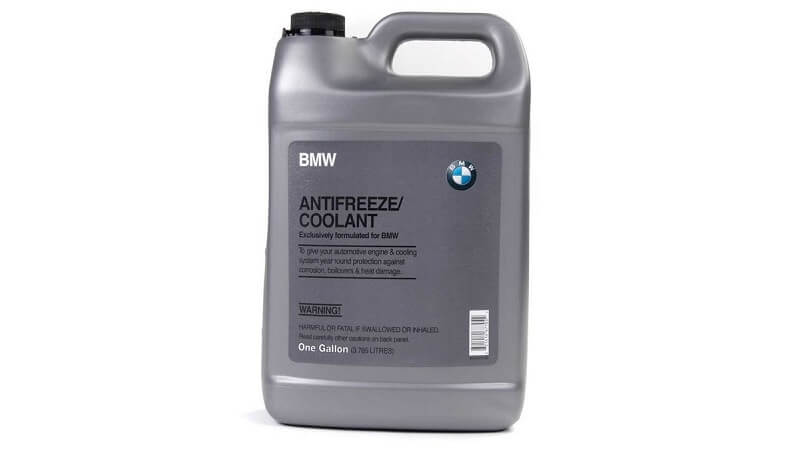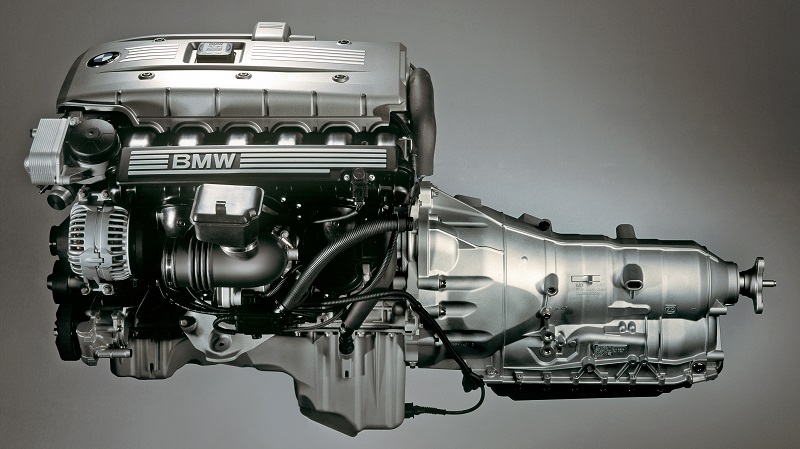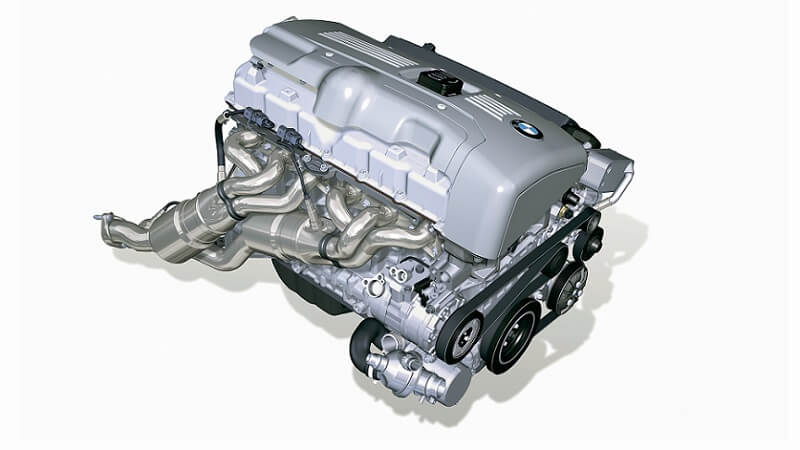Between 1982 and 1994, BMW produced a car that, in the decades to come, would become one of the most sought-after machines produced by the German manufacturer – the E30-gen 3 series. For many, the E30 struck the perfect balance between an everyday car and one that was built for an enthusiast’s driving pleasure. Over its 12-year production span, the E30 was available with multiple powertrain options and body styles, each garnering a fan base of its own.
This guide will take you through why the BMW E30 is still such a desirable car, the different options out there, and the most common problems you should look out for while buying one.

BMW E30 – The Story So Far
The BMW E30 is one of BMW’s most popular cars, both now and in its time. Considering its almost cult-like status in the car community, prices for the more popular models, like the 325i and the M3, only tend to go up every time one switches hands.
A little over 2.5 million units of the E30 were produced, but today, the number of properly running units that are up for sale is obviously a lot smaller. Finding one that you won’t have to spend a lot of money and time on restoring (unless that’s what you want to do!) requires that you know what you’re looking for.
The Predecessor

From 1975-1983, BMW produced the E21-gen 3-series. It was the E21 that BMW placed its bets on to attract a younger audience, and it enjoyed a fair bit of commercial success.
The E21 cars had their own share of flaws and shortcomings, but they’d established a loyal community. In 1984, BMW took the successful E21 formula and made it better with improved handling, refined driver ergonomics, and a smoother ride. This new and improved formula was the E30.
While the BMW E21 was geared towards providing its drivers with an entry-level BMW experience, the BMW E30 began to attract buyers who were interested in performance, refinement, and luxury.
The BMW E30 models came with better handling, more responsive chassis; were lighter than the E21 models, and had the performance to match. They were also better-looking cars and featured significantly better interiors. What’s not to like?
The BMW E30 is also the series that spawned the iconic M3. This new generation of cars introduced a new crowd to European driving dynamics and established BMW as a brand that made properly engineered cars.
Available Versions
In retrospect, there are two distinct versions of the E30 – those built from 1982 to 1987, and the ones that came after, up until the end of the line in 1994. Each of these ‘versions’ had several models under them, which we’ll get to in a bit.
In 1987, the E30 received some notable cosmetic updates with sleek plastic bumpers (replacing bigger metal ones), restyled wheel arches, new headlight, and taillight designs, and new engines on some models.
All models that were a part of the E30 line had a suffix (i, e, is, es, or iX) which, like with modern-day BMWs, revealed some details about the car. The “i” meant it was fuel-injected, the “e” translated to “economy”, the “s” denoted that it was the company’s “sport” model, and the “X” implied that the car had all-wheel drive. Select models also had diesel-engined versions on sale – these had a ‘d’ suffix.
The cars were also separated by different body styles. It started with a coupe design but as time passed, convertibles and four– and five-door station wagons also became a part of the E30 gamut.
As you can see, there are a few options you can choose from. Some, however, were a class apart from the rest.
Engine and Gearbox
BMW E30 engines produced between 86bhp (M21 engine on the 324d) to 238bhp (S14 on the M3) and came with both 5-speed manual and 4-speed automatic transmission options, depending on the model. The two most common engines are the M10 and the M20 that powered the more popular cars like the 318i, the 325i, and the 325is.
BMW E30 M10 Engine
The first BMW manufactured, the 316 and the 318i, came equipped with the M10 inline-four engine. The 318i was also the first E30 that was introduced in the US. The M10B18 1.8-liter engine on the 318i delivered about 105bhp and 107 lb-ft of torque, which by today’s standards can be considered quite pedestrian.
However, the M10 was (and still is) a remarkably fun engine and consequently, the 318i was just as engaging to drive. The engine on the 318i came paired to a 5-speed manual or a 4-speed automatic.
If you’re in the market for a 318i, you’ll probably find an automatic that doesn’t cost too much. But, keep in mind that this 4-speed auto isn’t nearly as smooth as the 5-speed manual transmission.
The M10 engine was a fairly heavy unit, but it’s probably the most robust one that BMW fit onto one of their E30s. If maintained well, they’d run over 60,000 miles without requiring any serious repairs. In fact, the M10 engine, despite its puny specifications, served as the base for the BMW M12 F1 engine. One of the most common issues you’ll run into with the M10 is the valve cover leaking. Fortunately, it’s a relatively easy issue to fix.
BMW E30 M20 Engine
The M20 is a straight-six engine that was manufactured in 2.0L, 2.3L, 2.5L, and 2.7L iterations. The most popular of these is the M20B25 2.5-liter six-cylinder that powered the 325i, 325is, and the 32iX. This engine produced 170bhp and 162lb-ft of torque.
The M20B25 made its way overseas and to the United States in 1987, which is around when the smaller M10B18 went out of production (the M10 engines were replaced by the M42 – we’ll talk about those next.)
Before the M20B25 made its way to the US, the M20 also powered the 320i (2.0L), 323i (2.3L), and the 325/e/es (2.7L) in other markets. The 325 models had a larger engine, were carbureted, and were designed to produce more torque at lower revs. The carburetor required its share of maintenance, but this was overshadowed by the TLC that the engine itself required.
The M20 wasn’t as reliable as the M10 engines and was infamous for requiring frequent timing belt maintenance; a snapped timing belt would result in valve train damage. Nobody wants that. As these cars become older, they’re also starting to exhibit no-start conditions more and more. We’ve done a thorough guide on how to troubleshoot such problems on your E30 325i. If you find yourself interested in an M20 powered E30, one of the first things you should do is have the timing belts replaced.
BMW E30 M40 Engine
Remember the mid-life update that the E30s underwent in 1987? One of the most significant upgrades was the addition of the M40 engine. The M40 made its way into the 316i and the 318i that were produced between 1987 and 1994. The latter, the 318i, was the best-selling BMW E30 in the US and Canada until the BMW E36 3-series came along.
The M40 on the 316i produced 100bhp and 107lb-ft of torque, while peak output figures were slightly higher at 113bhp and 119lb-ft on the 318i. While they brought about 10bhp and 5-7lb-ft of torque over the M10 engines on their respective models, they weren’t as well-engineered.
While the chain-driven cam on the M10 would last about 100,000 miles, the belt on the M40 had to be replaced at about 30,000 miles.
BMW E30 M42 Engine
The M42B18 engine produced the BMW 318is that was manufactured between 1989 and 1991. The inline-four 1.8L engine produced 134bhp and 127lb-ft of torque and came with a sportier suspension, lighter wheels, and some added cosmetics. The ‘is’, despite its more sport-oriented intentions, failed to fill the shoes that its predecessor, the 318i, had left behind.
This engine was also fitted onto the 318i, but only in the North American market.
BMW E30 S14 Engine
If you aren’t a Bimmer fanatic, the S14 may mean little to you. But, given some context, like the fact that it powered the very first M3, and you’ll see why it’s such an integral part of car history.
The first E30 M3 came out in 1986 with the S14B23 – a 2.3L straight-four that produced 195bhp and 170lb-ft of torque. In 1988, the S14 gained a little more power and torque, with 220bhp and 181lb-ft of torque. This engine powered the M3 Evo II.
The last of the S14 engines were on the M3 Sport Evo that was produced from 1989-1990. A bump in size meant it now displaced 2.5L. This bigger configuration also brought a humble increase in power, about 18bhp, but also saw a slight drop in torque – about 4lb-ft.
The S14 is probably the most reliable of the E30 engines. If maintained well and taken care of, it’s a drivetrain that can get past the 300,000-mile mark. It’s no surprise the E30 M3 is one of the most desirable classics ever. We’ll dig into the car in a little more detail further below.
BMW E30 M21 Engine
The E30 M21 is BMW’s 2.4L inline-six engine that powered the 324d that was manufactured between 1985 and 1991. Peak output figures were 86bhp and 112lb-ft of torque, and this was the least powerful E30 made. As a result, it wasn’t as popular and made its way only to select markets.
The M21 also powered the 324td – the ‘t’ denoting the presence of a turbocharger. The 320td was available from the inception of the E30 line, until 1991. The forced induction brought with it a bump in numbers – 115bhp and 155lb-ft of torque.
Body Styles

The E30 cars were available in several body styles. Apart from the two-door coupe and Baur convertible body that it carried over from its predecessor, the E21, the E30 was also available as a four-door sedan, and four– and five-door station wagons.
In the latter half of the E30’s life, a Touring style body was also manufactured, but it never officially made its way to the US or Canada.
The Holy Grail – BMW E30 M3
The BMW E30 M3 is BMW’s most sought-after BMW E30, and with good reason. The BMW E30 M3 came out in 1986 and was produced until the tail-end of 1990.
The M3 was first built as a homologation special to satisfy the DTM (Deutsche Tourenwagen Meisterschaft) and Group A Touring race rules, which required a total of 5,000 cars to be built. Visually, the car resembles the standard E30, but it features a front splitter, a taller rear spoiler, and larger wheel arches to accommodate the M3’s wider tires.
Under the surface, the M3’s performance was improved with better brakes, more capable suspension. The brake calipers, discs, and master cylinder were specifically designed for the higher performance that the M3 was to deliver.
E30 M3

As we mentioned earlier, the first-gen M3 (also known as the M3 Evolution I) was powered by the 2.3L four-cylinder DOHC S14 engine. This high-revving unit featured a head that was heavily based on the S38 six-cylinder engine from the M1 and a block that found its roots in the M10.
BMW E30 M3 Convertible
In 1988, BMW also manufactured an open-top iteration of the M3. It was mechanically identical to the standard car, apart from the addition of strength elements to account for the lack of a roof.
The engineers also made minor tweaks to the suspension to compensate for the weight difference. The open-top M3 wasn’t as popular as its hard-top sibling and under 1,000 models were produced in its lifespan.
BMW E30 M3 Evo II

A couple of years after the first-gen M30 came out, the German manufacturer updated it with the Evolution II. It featured a few changes compared to its predecessor, the most notable of them being the more capable engine.
Cosmetic updates included larger wheels, and different front splitter and rear spoiler designs.
BMW E30 M3 Sport Evo
The last E30 M3 produced was the M3 Sport Evo. Limited to just 600 units, this M3 got a 2.5L straight-four that produced 235bhp and 177lb-ft of torque – incredibly impressive numbers even for its time. This made it one of the most sought-after models of the E30 generation.
Along with the bigger engine, the Sport Evo also came with an adjustable front splitter and rear wing, and cooling ducts for the brakes.
The E30 M3 was designed to be an enthusiast car and proved to be rather successful on the racetrack. In its time, it accumulated over a dozen championship titles, including ones in the World Touring Championship, British Touring Car Championship, and even in rally events like the Irish Tarmac Rally Championship.
The M3 also won at the 24 Hours Nürburgring five times – 1989, 1990, 1991, 1992, and 1994. It also won the Spa 24 Hours four times – 1987, 1988, 1990, and 1992.
What to Look For When Buying a BMW E30?
E30s are BMW’s most popular cars in the second hand market. That said, the most recently made E30 is at least 27 years old. There’s also the fact that most of the E30s that are up for sale have seen thousands of miles.
Unsurprisingly, there are several things you’ll have to look out for while buying one. Lucky for you, most of the issues you’ll find with an E30 are known to plague the car, so you shouldn’t have too hard a time determining if the car you’re looking at is in good shape or not.
Rust
BMW used galvanized steel on most of the E30’s bodywork, but it was still susceptible to corrosion. Factors like road salt, in particular, meant that even low mileage E30 cars can have some extent of rust on them. Some of the most common places where you can find signs of oxidation are around the rear number plate and taillights, and the bottom of the door.
Leaky Sunroofs
Several owners have also complained about the sunroof on their E30s leaking water into the cabin. This isn’t a very common problem with some models of the car, but it’s worth checking. This is likely because the sunroof seal has worn out with time and depending on where you’re located, you should be able to find a replacement.
Electrical Problems
All E30s out there have spent over a couple of decades on the road, and it’s no surprise that many of them have developed some sort of electrical issue. These vary from wiring trouble, corroded fuses, low voltage issues, and faulty window switches. Depending on what the damage is, some issues might require quite a bit of work to resolve.
M42 Rubber Profile Gasket
This issue should concern you only if you’re looking at one of the M42-powered E30s – the 316i, or popular 318i. The front of the engine head features a rubber profile gasket, which has been known to fail. This can result in coolant getting into the engine oil and this can be quite a tedious, technical and expensive problem to fix.
Suspension
Worn struts are another common problem associated with E30s. The front struts in the spring cup area can be quite weak and taking a hammer to them will even break them if they’re in poor condition. Fortunately, there are plenty of awesome options for the E30 in terms of shocks. You’ve got complete Bilstein kits that will greatly improve your E30s handling.
Brakes
The 316, 316i, and 318i come equipped with drum brakes at the rear, while the rest of the E30 line-up has discs all around. Considering the age of these cars, a poorly maintained unit is bound to have the usual problems of worn-out hoses, calipers, and leaky master cylinders.
Interiors
Some things worth watching out for on the inside of the car are a cracked dashboard, worn-out seat bolsters, and a broken odometer. While the odometer is an easy fix, the dashboard and seats will cost you a little money and spares can be hard to come by.
Is the BMW E30 a good investment?

We’ve covered all that there is to know about the E30 generation of the 3-series, and it brings us to the question – over two decades later, is a BMW E30 worth buying? Yes. Yes, it is.
The E30 generation played an integral role in making BMW the driver’s car that it is today. It’s remarkably fun to drive and like a true classic, it only accumulates in value if it’s taken care of. If you know your way around a car, it’s also possible to work on (and maybe, restore) on your own. You should also know that, despite its shortcomings and the issues, parts like body panels and interior bits are available.
What Does It Take to Keep a BMW E30 On The Road?
There’s a BMW E30 for everyone. Yes, finding one that won’t require a lot of work is ideal, but finding a car like that’s up for sale can be difficult. No matter the state of the specimen you decide to buy, the only way to keep an E30 on the road is to use quality parts and to be on top of your maintenance game.
Here at Bimmers.com, we offer everything you could need to accomplish this mission. Simply select your car using our car selection tool, and you’ll get a list of quality parts that are guaranteed to fit.




